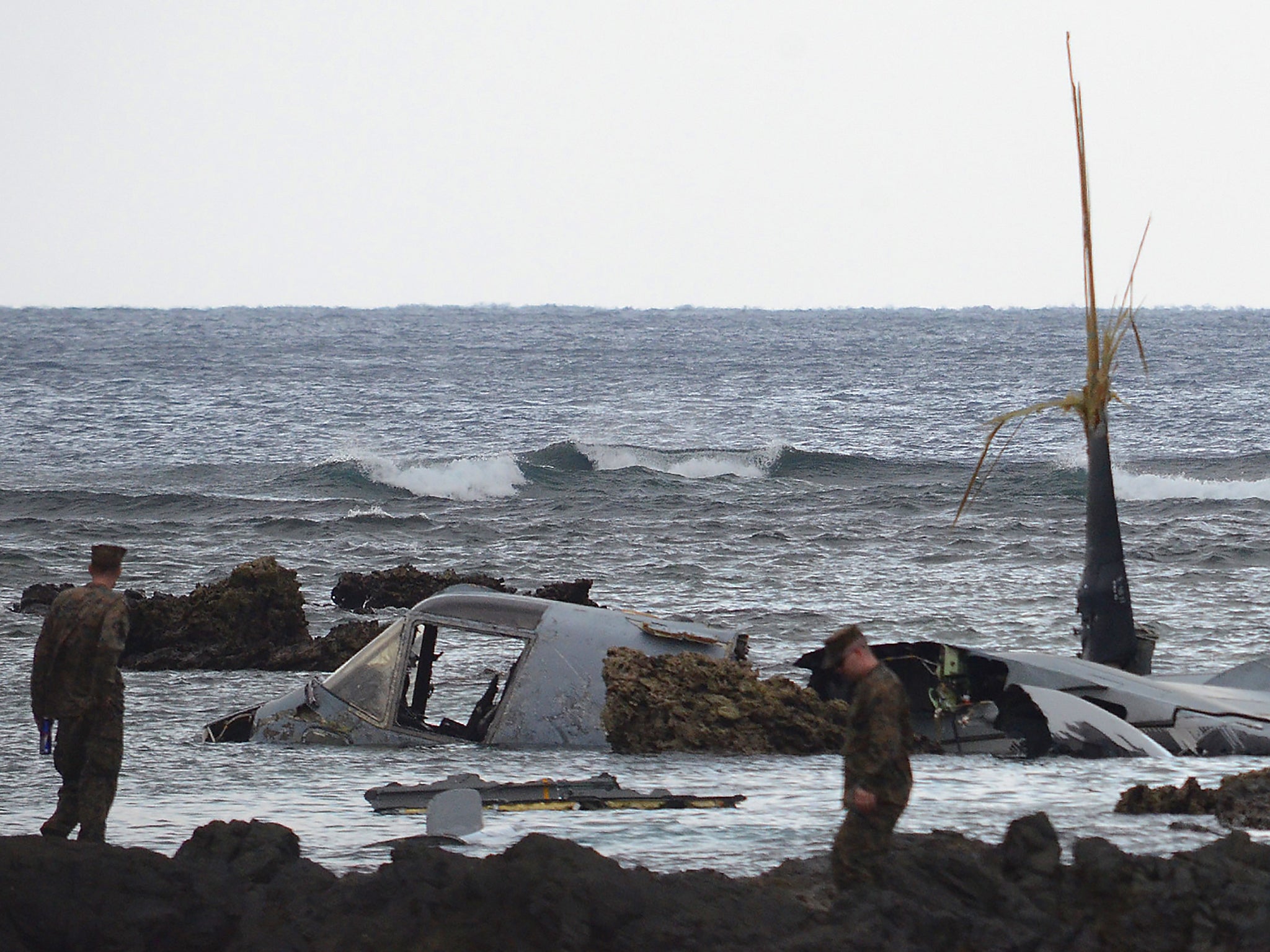US hands back to Japan thousands of acres of land on Okinawa island
But activists say it's not enough and that they feel 'betrayed' by exchange deal for more helipads

Your support helps us to tell the story
From reproductive rights to climate change to Big Tech, The Independent is on the ground when the story is developing. Whether it's investigating the financials of Elon Musk's pro-Trump PAC or producing our latest documentary, 'The A Word', which shines a light on the American women fighting for reproductive rights, we know how important it is to parse out the facts from the messaging.
At such a critical moment in US history, we need reporters on the ground. Your donation allows us to keep sending journalists to speak to both sides of the story.
The Independent is trusted by Americans across the entire political spectrum. And unlike many other quality news outlets, we choose not to lock Americans out of our reporting and analysis with paywalls. We believe quality journalism should be available to everyone, paid for by those who can afford it.
Your support makes all the difference.US armed forces have handed back nearly 10,000 acres of land on Okinawa to the Japanese government in the biggest transfer of American-occupied space there since the island was returned to Japanese rule in 1972.
But activists, who have long campaigned to have US military bases removed from the island entirely, said they felt "betrayed" by the deal which saw the Japanese build a number of new helipads to accommodate the controversial MV-22 Osprey tilt-rotor aircraft, in return for what amounts to about half the US' military training area.
Takashi Kishimoto, from the anti-US base group Peace Okinawa, told CNN: "From our point of view, the US military is giving back something it doesn't want while having new Osprey runways built. Okinawa alone is host to 74 per cent of the US' military bases in Japan. The return of this land only reduces this presence to 71 per cent."
An Osprey crash-landing off Okinawa on 14 December added to safety concerns and anti-US base sentiment.
Demanding an unconditional land return and opposing Osprey deployment on the island, Okinawa Govenor Takeshi Onaga boycotted Thursday's handover ceremony and joined a protest against the US military presence on the island, his choice highlighting differences between the central government and Okinawa. Prime Minister Shinzo Abe and the US ambassador to Japan, Caroline Kennedy, attended a ceremony in Tokyo over the move the previous day.
At a rally held near Thursday's ceremony venue, Mr Onaga told thousands of cheering people that the land return in exchange for a new US military facility is deceptive and is not reducing Okinawa's burden.
“The land return ceremony one-sidedly held by the central government is nothing but a proof they have no intention whatsoever to be considerate of our suffering,” Mr Onaga said. He renewed his demand that Ospreys be removed from Okinawa and that any US military base planned for a closure simply be returned and not relocated.
Kouji Ida, of the Okinawa government's military base affairs divison, told CNN: "This handover isn't enough.
"The helipads will be used to launch Ospreys, and we fear there may be more crashes. Ultimately, we hope the presence of the US military bases will continue to shrink."
The US military said in a statement Japan had made sufficient progress in building helipads and access roads to consolidate military training in other areas and allow for the return of the 9,909 acres.
The returned land is part of the Northern Training Area, or Camp Gonsalves or the Jungle Warfare Training Center, and is the largest US installation in Japan with 19,300 acres of land.
Okinawa hosts the bulk of the approximately 50,000 US military personnel in Japan.
Lt-Gen Lawrence Nicholson, of the US Marines in Japan, said: "This decreased training area on Okinawa will not deteriorate our commitment or our ability towards working with the government of Japan and our partners in the Japan Self Defense Force in mutual defence of this country."
Although agreed in 1996, the return of the land was delayed by protesters blocking the construction of helipads. The Japanese government recently resumed work at the site.
On Tuesday, Japan's top court ruled in favour of the government plan to relocate the Futenma base to another part of the island, dealing a blow to islanders' efforts to get rid of it altogether.
The Associated Press contributed to this report.
Join our commenting forum
Join thought-provoking conversations, follow other Independent readers and see their replies
Comments